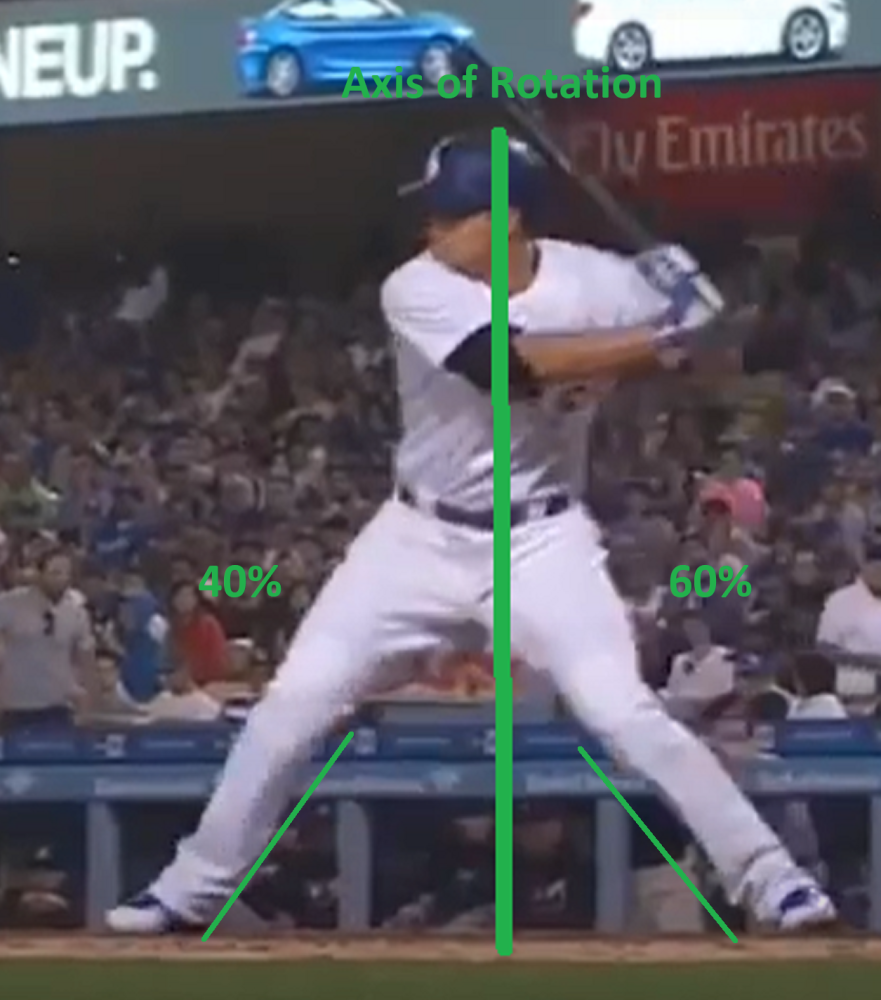
The Physics of Generating Power in a Baseball Swing
By Ken Cherryhomes ©2024
Pyramids have withstood the test of time due to their unique structure and weight distribution. The same principles of weight distribution and stable connection to the ground are crucial in generating power in human movement, particularly in a bat swing. When a person lowers their center of gravity through a broadened base and bent knees, they establish a firm connection to the ground, allowing them to generate a greater amount of force when pushing off in one direction. Maintaining the ground reaction angle of the leg being pushed off of is critical to ensure powerful movement while reducing energy loss.
In baseball or softball, generating power in a swing is equally important. After generating the initial force through the push-off, the focus shifts to transferring that energy to a swung object, such as a bat. Maintaining the ground angle of the front leg during the swing is crucial to prevent weight from shifting over the front leg, which would dissipate the energy generated from the push-off.
It is also essential to manage the movement of the center of gravity during the swing to ensure an efficient transfer of energy from the body to the bat. Maintaining a stable connection to the ground and ground angles is key to generating maximum power. Measuring weight distribution on force plates is a common misconception. Shifting weight back may increase the percentage of weight measured on a force plate, but it does not necessarily result in more power if the ground angles are not maintained. Additionally, when the swing is launched after the stride/load phase, weight distribution at the feet returns to the preset weight ratios prior to striding.
To generate power in a baseball swing, the energy to propel the bat forward comes from the ground reaction forces generated by the feet, so a stable base is necessary. A stable axis of rotation is also key to maintaining consistent energy exchange between the body and the bat. Any off-axis movement can disrupt the connection between the axis of rotation and the bat, leading to a loss of power. This includes an increase in bend at the waist, changing posture and the distribution of body weight and its intended direction in respect to its power source properties.
Batters should focus on rotating their pelvis while maintaining their posture and a stable base instead of shifting their body to move weight from the back foot to the front foot during the swing. By doing so, they can maximize the angular momentum of the bat swing by reducing linear travel and off-axis movement, allowing for a more efficient transfer of energy to the bat. Destabilizing the axis of rotation disrupts the exchange of energy from the hands to the bat by “disconnecting” the energy exchange.
To achieve a stable base, batters should preset their weight distribution proportions then abruptly rotate the pelvis at push-off, almost inverting those ratios, back to forward, to generate power without dissipating energy.
Let us first imagine a batter’s setup, weight distributed approximately 60/40, back foot to front foot. A noticeable angle of approximately 45 degrees for the ground angles of each leg is apparent.

To move weight, back to forward, this ground angle of roughly 45 degrees should be maintained to facilitate clean, powerful exchange. Were the batter to first move weight back, not only will the center of mass change its axis of rotation position, the ground angle of the back leg would move more toward a 90 degrees to the ground, which is conducive to jumping up, but not conducive to moving laterally. Furthermore, the center of mass would have to move forward when the rear leg ground angle returns to 45 degrees. Not only would the batter simply be returning to the position they were already in to start with, but they would also be required to drift back into that position before they can push off to launch their swing. The result would be a more time-consuming move that was less powerful, had they not moved back in order to move forward. In addition to this, there is a greater chance the batter’s body may also drift too far forward, off axis, during the exchange.

In conclusion, a powerful baseball swing requires proper technique and an understanding of the physics involved. By maintaining a stable base, minimizing off-axis leakage, and keeping the connection between the axis of rotation and the bat, batters can achieve maximum energy transfer to the bat and produce a more powerful swing.